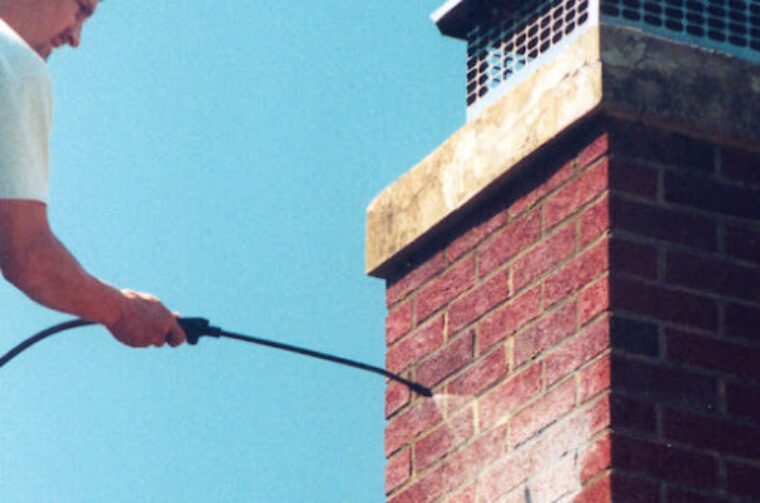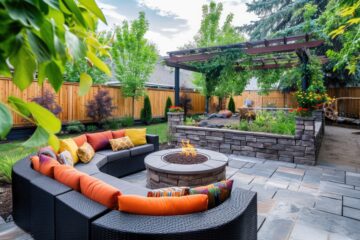You may believe all the work is done after you have a brick surface laid in your house, workplace, driveway, sidewalk, patio or balcony. Although brick is durable and solid, it is still vulnerable to moisture.
All things decay with time, and exposure to the elements may quicken that process. Although brick may be as strong and robust as ever, it is still extremely susceptible to dampness. The mere presence of any water in even the tiniest fractures and gaps can lead to all kinds of issues over time.
Your brick surface may appear fine now, but if you want it to last a long time, you’ll need to take some extra steps to ensure its quality over time. Here’s some information on the significance of applying a brick sealer and how to use it.
Common Uses of Brick in Home Construction

Bricks are most often used on the exterior of a home. The entire residence may be sided in brick or only part of the structure for improved curb appeal. Bricks are used as structural and non-structural members in walls, retaining walls, arches and claddings, as well as fillers and ornamental components in the construction of buildings.

How much product do you need?
Why Brick Needs to be Sealed and Waterproofed
Sealing and waterproofing the brick on a home’s exterior improves its value by increasing the life and beauty of the masonry construction, especially in a humid environment. Sealant is also effective in eliminating the gritty feel that interior brick floors and outdoor paved surfaces have in some areas. Some sealers do not provide waterproofing, which is important in humid climates.
Properly sealed brick prevents damage from:
Moisture
Unsealed brick absorbs water, which can weaken the porous brick masonry and mortar. When water freezes in the pores and cracks of brick, the expansion can cause structural damage and cracking.
Efflorescence
This is a white powdery substance that forms on the surface of the masonry when water evaporates and leaves behind mineral deposits.
Color Fading
UV light, rain, snow and ice all contribute to the fading of brick color. A sealer will help protect against this type of damage.
Crumbling and Spalling
When unsealed, brick is vulnerable to a process called spalling, meaning the outer layer of the brick begins to peel away. Crumbling is a related issue in which the mortar holding the bricks together begins to deteriorate.
Molding and Mildew
Mold and mildew can grow on unsealed brick, causing discoloration and an unsightly appearance. In extreme cases, mold and mildew can even cause health problems.
Weeds and Grass
Brick pavers and other types of exterior brick are often used in landscaping projects. Unsealed brick can absorb water, which allows weeds and grass to grow in the cracks.
Selecting the Right Brick Seal
When it comes to selecting the finest masonry sealer for sealing stone, brick or concrete, it’s crucial to first understand the numerous types of sealers. Understanding the many forms of masonry sealers can help you determine which one is best for your project.
Silane/Siloxane sealers provide the greatest benefit when it comes to protecting all masonry materials, including stone, brick, paver and concrete. They chemically react with the surface to form a hydrophobic barrier within the pores. They help minimize water absorption, mold and mildew formation, staining and deterioration caused by moisture absorption.
High Gloss Sealant
A sealer that contains a high concentration of acrylic solid content, such as a polyurethane or alkyd enamel, produces a gleaming or glossy finish. This type of finish darkens faded pavers, making them appear wet while adding a brilliant sheen. A gleaming sealer can enhance the natural reds and brown hues of standard brick.
Depending on the number of solids, these sealers will produce a high-gloss shine. A 25% solid content sealer would be defined as semi-gloss while a 30% solid content sealer would be considered a gloss.
Matte Finish Sealant
A matte finish will not significantly alter the look of the brick, but will still protect the surface and keep dampness out. Most matte sealers are water-based. Aside from a matte finish, you may also choose between a slick or wet appearance.
So, what is the difference between a brick sealer with a shiny look and one with a wet look? The answer is in the ingredients. A shiny sealer contains more acrylic, which can make the surface slick when wet. A wet look sealer does not contain as much acrylic and will provide a more natural look.
Wet-Look Sealant
The most common wet-look sealers are solvent-based penetrating formulas. Wet-look sealers are not meant to give your brick a glossy finish. It’s like how your brickwork would appear if water were sprayed on it.
To get an idea of what look you can achieve with a wet-look sealer, you can mist the brick with water, as long as there is no existing waterproofing that would repel the water. They will darken and seem moistened without a shiny sheen. Even after the sealer has dried, the bricks will continue to appear damp.
Invisible (Translucent) Sealant
DRYLOK® Siloxane 7 Brick and Masonry Penetrating Sealer minimizes masonry deterioration and efflorescence while also preventing surface staining with just one application. It has no shine and is almost invisible on stucco, brick or concrete.
How to Seal Brick
Follow these simple instructions for great results every time:
1. Sweep or Dust Brick to Get Rid of Loose Particles

Before sealing, sweep or dust the brick thoroughly. Remove any dust and grit from the masonry joints and corners where it tends to accumulate.
2. Wash and Scrub the Brick
Scrub the brick using a sponge and soapy water. Wipe away any excess moisture with towels. Allow for an overnight drying period before continuing.
3. Apply Brick Seal

Spraying DRYLOK Siloxane 7 Brick & Masonry Penetrating Sealer when both air and surface temperatures are 50°F or higher will produce the best results. In addition, it is important not to thin the solution.
A regular garden sprayer or power equipment can be used. Hold the spray at an angle to prevent splashing while starting at the top of the wall and working your way down.
Flood the surface with DRYLOK Siloxane 7 Brick & Masonry Penetrating Sealer to create a run-down of 8 inches to 12 inches of material. When using a brush, extreme care must be taken to ensure uniform flooding of the surface. Don’t brush it out.
Work with DRYLOK for the Best Masonry Care and Repair Solutions
Whether you’re a professional, DIYer or homeowner searching for waterproofing solutions, our team and products are here to assist with your next project.
DRYLOK is the name customers recognize and trust, and the industry leader in waterproofing protection. Contact us today for a list of retail locations near you.



